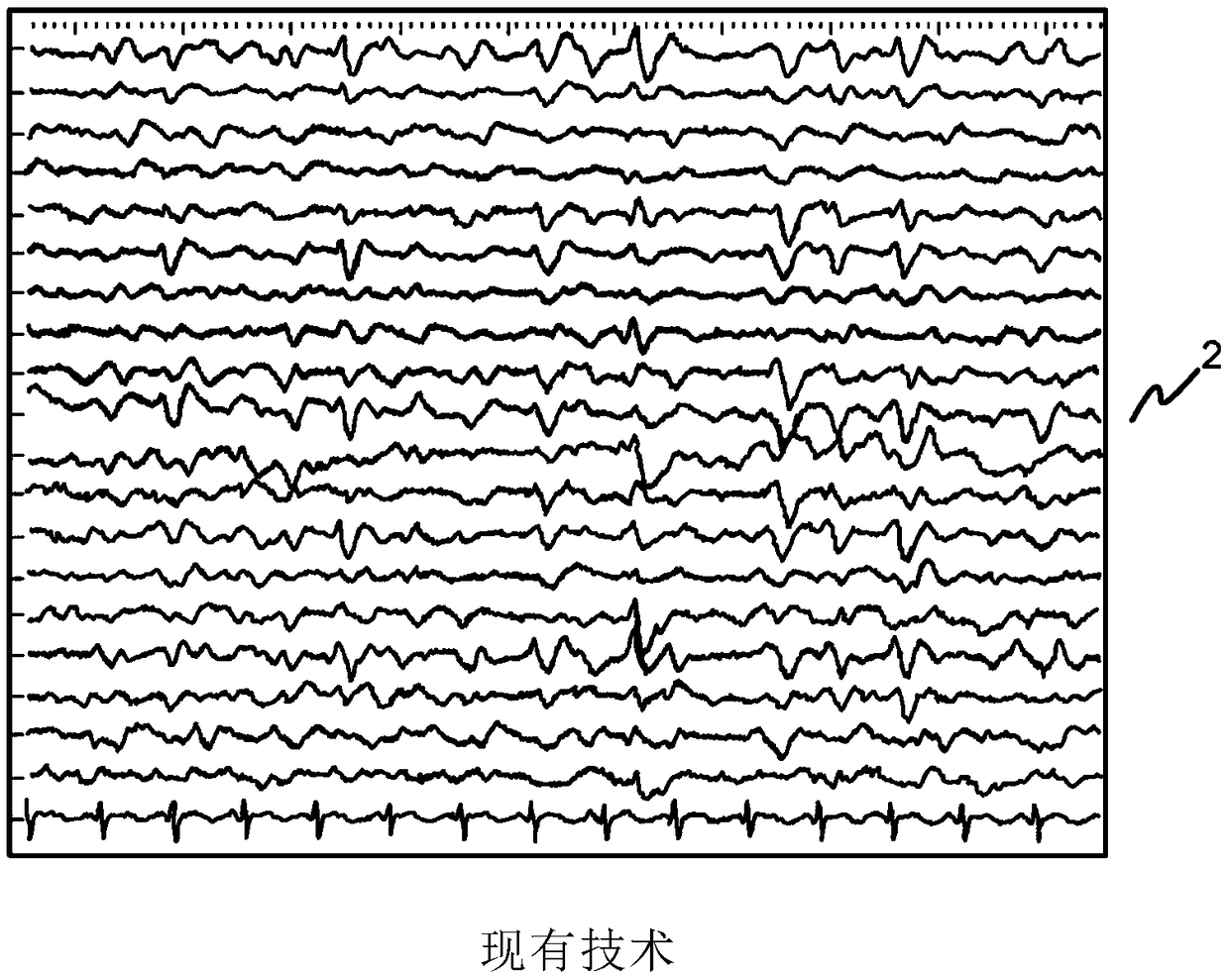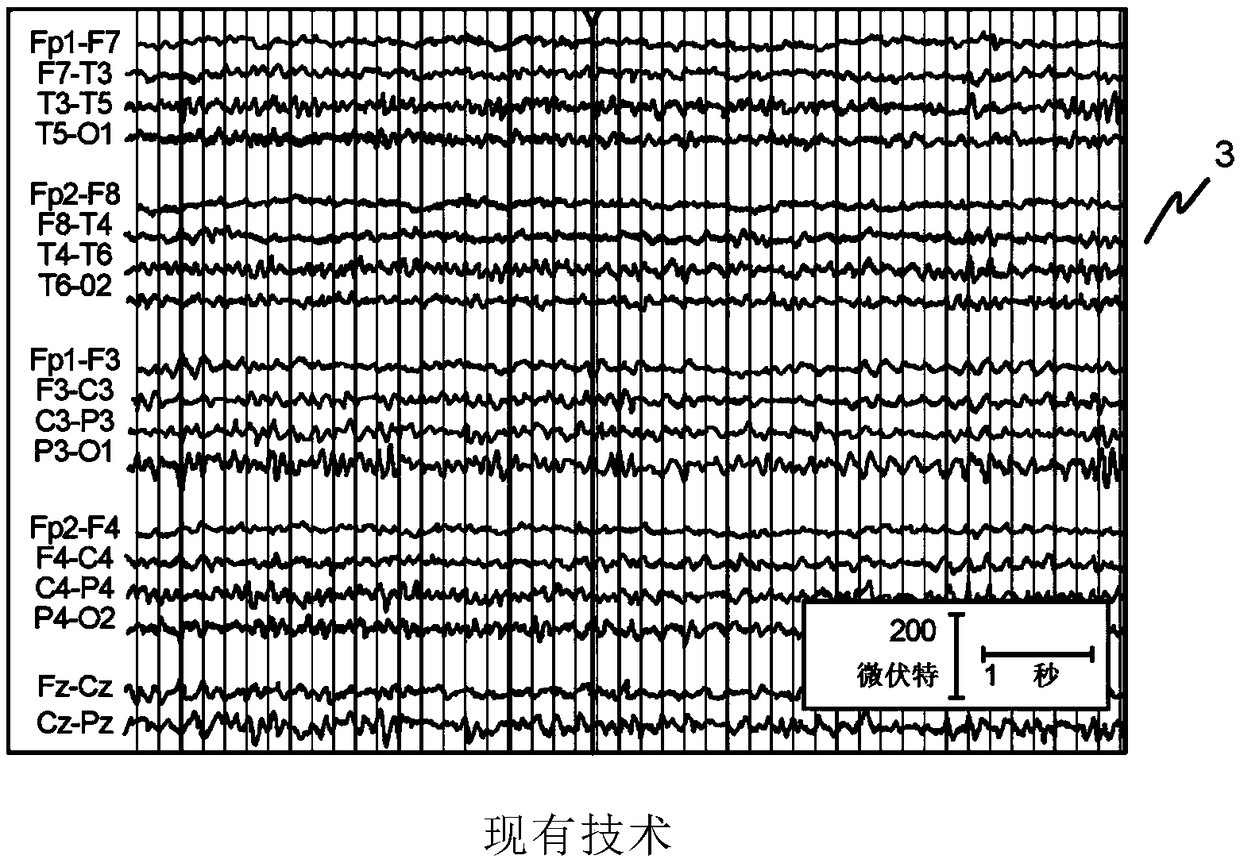Apparatus, systems and methods for predicting, screening and monitoring of encephalopathy / delirium
A technology for screening and encephalopathy, applied in medical equipment, telemetry patient monitoring, applications, etc., can solve problems such as cost, impossibility of delirium screening, and poor sensitivity
- Summary
- Abstract
- Description
- Claims
- Application Information
AI Technical Summary
Problems solved by technology
Method used
Image
Examples
Embodiment 1
[0087] Example 1: Screening for encephalopathy by BSEEG compared to clinical diagnosis of delirium
[0088] In this embodiment, a preliminary study was carried out, using more than 80 patients aged 65 and above (both clinically diagnosed with delirium and clinically diagnosed without delirium), comparing the results obtained by screening device 10, system 1 and method 5 The patient's brain wave signal. Baseline cognitive function was assessed using the Montreal Cognitive Assessment (MoCA).
[0089] In this example, patients were subsequently screened for the presence of delirium using the Confusion Assessment Method in the Intensive Care Unit (CAM-ICU). Following the assessment, electroencephalogram (EEG) readings are obtained by BSEEG using the presently described device, system, and method, i.e., two EEG leads are placed on the patient's forehead - one for each cerebral hemisphere - to obtain a 10-minute course Two-channel signal from the right and left within. A ground w...
Embodiment 2
[0093] Example 2: Screening Device Evaluation
[0094] In this example, the initial training set of the dataset consisted of 186 total EEG samples from patients associated with clinical or CAM evidence of delirium. These samples represented 5 positive cases, 179 negative cases, and 2 negative cases excluded from further review due to insufficient data quality for analysis.
[0095] In this example, a low-pass filter of 15 Hz was initially used, but preliminary results indicated that there was an unequal attenuation in the FFT frequency information between positive and negative cases, so the low-pass filter was discarded.
[0096] During the processing of the treated samples, a window of 4 seconds was observed to be sufficient to show good results. Moreover, in this embodiment, for example as Figure 9A and 9B As shown, a threshold of 500 μV was used to exclude windows containing high-amplitude peaks.
[0097] Figure 9C and 9D The spectral density of the channels is depi...
Embodiment 3
[0103] Example 3: Machine Learning
[0104] Such as Figure 12 As shown, in some embodiments, a machine learning model (block 200) is used to identify hallmarks of delirium / encephalopathy, and can be used to modify other systems, methods, and devices described herein, such as by refining thresholds ( as combined Figure 6 -8 to 65) to improve the accuracy of diagnosis. In these embodiments, a model is used within a computing machine (block 204) to correlate individual patient data and population patient data (shown generally at block 202). In general, various machine learning methods can be coded for execution in: screening device 10, server / computing device 42, database 36, third party server 34, in operative communication with screening device 10 and / or sensor 12 other computing or electronic storage devices (also such as Figures 5A-5D shown in the implementation).
[0105] The model can be performed on data recorded from the patient 30 or otherwise (such as spectral d...
PUM
 Login to View More
Login to View More Abstract
Description
Claims
Application Information
 Login to View More
Login to View More - R&D
- Intellectual Property
- Life Sciences
- Materials
- Tech Scout
- Unparalleled Data Quality
- Higher Quality Content
- 60% Fewer Hallucinations
Browse by: Latest US Patents, China's latest patents, Technical Efficacy Thesaurus, Application Domain, Technology Topic, Popular Technical Reports.
© 2025 PatSnap. All rights reserved.Legal|Privacy policy|Modern Slavery Act Transparency Statement|Sitemap|About US| Contact US: help@patsnap.com



